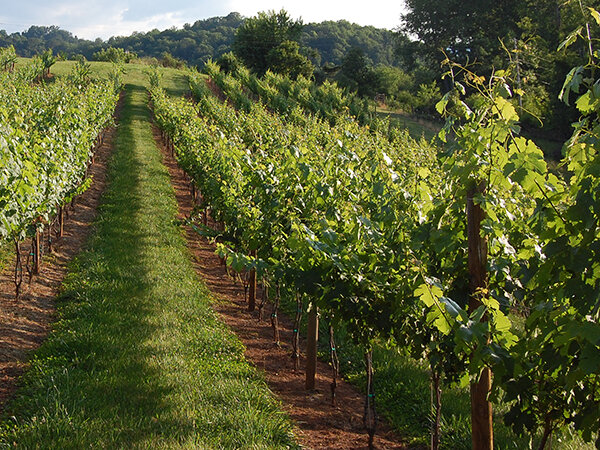A vineyard for you part 2
06/10/2015
06/10/2015

A friend called me recently after reading the previous blog post, and she said that I had failed her. I asked how. She said that I had told the story of researching what it takes to start a vineyard, and I had shared the common response of ‘don’t do it.’ I failed to explain why everyone seemed to discourage it.
What is the logic behind ‘don’t do it’? Was it a fear of competition? Not a chance – this industry needs more growers, more producers. We would love to see several more wineries and stand-alone vineyards in our community! Was it a personal issue? No, in most cases, I had no prior connection to any of the growers.
I think there are three reasons my now-fellow growers said not to become a grower. I know these are the three reasons I start the conversation with prospective new growers in the manner I do.
First, building a vineyard is capital-intensive. Let’s ignore the cost of buying the property, not because it is not significant but because it is such a big expense. For this conversation, we are assuming you already own farm land, and you are looking for a new crop for your farm. If you use six feet between vines and 10 feet between rows [6×10 spacing, the same spacing we use], your vineyard will have 726 vines per acre. You can even check my math; an acre has 43,560 sqft and each vine requires 60sqft [6×10]. If we assume total vine cost of $5/vine which is slightly higher than what we have spent over six years of purchasing vines, the total cost just for the plant material per acre is $3630. Denser spacing would cost more, more sparse spacing would be less. Trellis costs for a Vertical Shoot Position [VSP] trellis run somewhere in the $2500/acre for a 6×10; more density equals more cost. The cost just for vines and trellis supplies run about $6k/acre on 6×10 spacing. If you go with a divided curtain trellis, the trellising cost will approach nearly double that of VSP. The aforementioned expenses do not include any labor, equipment, spray material, or any of the other things necessary to produce good fruit. One of the things that we knew going into this venture was that we were under-capitalized; we just did not know how severely under-capitalized we really are!
Second, the time to revenue is fairly long and the time to profitability begins to approach eight to nine years. If you really want to see the numbers behind this statement, I am happy to share a paper I wrote in 2010; you can make the request from our contact page. Don’t judge me on my prose! It takes three growing seasons before the vines produce usable fruit. The vines will produce a small amount of fruit, even in the first and second year, but it is small, not usually good quality fruit, and uneconomical to collect. Year one, we want to establish strong roots; that should be our main goal. When we winter prune the first leaf vines, we cut them back nearly to the graft joint, leaving two, two-bud spurs. In year two, we want to establish strong trunks and cordons. The first couple of years require a significant amount of work and just as much spray material and diesel as following years with absolutely zero revenue generation.

Finally, if we strip away everything else, building a vineyard is hard work, as is everything else in farming. Getting rows laid out straight, vine- and post- holes marked and augered, and vines planted takes about 200 man-hours per acre. Aesthetics matter in a vineyard, but straight lines also protect the vine and allow you to get equipment down the rows without hitting and damaging your vines. Every other operation in the vineyard takes a minimum of 40 man-hours per acre, and most require closer to 60 man-hours per acre. For us, we are basically performing work in the vineyard from the beginning of winter pruning [40 man-hours per acre] to harvest [60 man-hours per acre] and beyond. In 2014, we spent an average of 268* man-hours per acre for the farming work.
With all of that said, we still went ahead with it. Our goals have both economic and emotional components, so that gives us an additional consideration. Undertaking a vineyard project of any size requires a long-term view and plan. It is a big commitment of resources, both your time and finances. And as with everything in farming, there is a risk. Weather is always a concern, whether we are worried about a late spring frost, or too much rain, or not enough rain, or the timing of rain, or an early fall frost, or… I think you get the picture!
*268 hours per acre includes the hours used for processing fruit during harvest. It is small as a percentage, but we do not break-out those hours as a separate item; they are included in our vineyard labor budget.